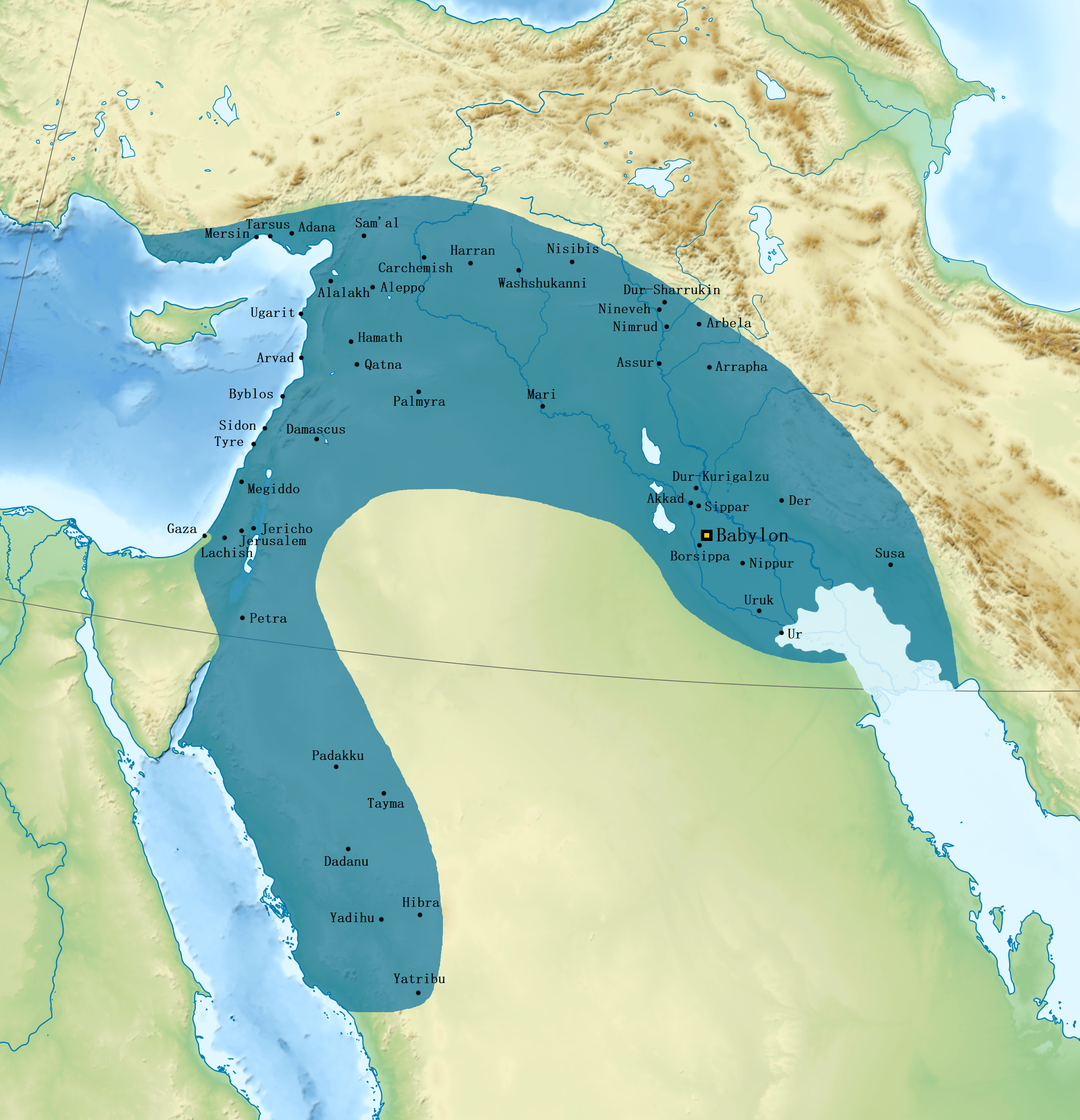The Neo-Babylonian Empire
The Rise of the New Empire
The Neo-Babylonian Empire began when Nabopolassar took control over much of the land that was once Babylonia in 620 BCE ("Babylonia and Assyria").
He was able to accomplish this because the Assyrians that controlled the land at the time were beginning to lose their grasp
on their empire, and support for the original Babylonian Empire was still fairly strong within the citizens of the lands.
Nippur and the northern end of Babylonia were the only areas not easily taken by Nabopolassar, as they still had strong
support for the Assyrians. In 615 BCE, the Babylonians were able to ally with nearby empires to assault the Assyrians on
many fronts at once, stretching their already thinning armies to their breaking point (Lipschits 17). With the Assyrian resistance gone,
the Babylonians were able to begin rebuilding the empire they longed for.
Rebuilding the Empire
After Nabopolassar died, his son Nebuchadnezzar II took control of the throne. Like Hammurabi, Nebuchadnezzar II was a very popular
and well-respected leader, as well as being capable of lifting the empire to new heights. Under his rule, many new buildings were
constructed, and many Babylonian cities were heavily expanded and improved. He also was able to successfully lead Babylonian
armies to capture portions of the Assyrian Empire. With the newly conquered land, the Neo-Babylonian Empire was far bigger than
the original empire, and was just as successful during the time it existed (“Babylonia”).
Nebuchadnezzar II was also able to neutralize the threats to the empire effectively. After Nabopolassar died, the Scythians and the Cimmerians
became more aggressive towards the Babylonians, and were successfully fought back. While the Egyptians were not incredibly hostile towards the
Babylonians, they were still invaded by the empire's armies, and was temporarily captured ("Babylon and Assyria"). During this time, Nebuchadnezzar II began focusing
more on building projects and keeping the empire instead of expanding it. One of these projects is the Hanging Gardens of Babylon, which was
supposedly constructed for his Median wife, Queen Amytis because she missed the views of her homeland while living in Babylon (Cartwright).
The Collapse of the Babylonians
While the Neo-Babylonian Empire grew to be very large and powerful, it faced many issues that were not unfamiliar to the issues that plagued the original empire.
The death of Nebuchadnezzar II, followed by his replacement with a lesser leader, caused the empire to begin to quickly crumble. On top of this,
the large size of the empire made it incredibly difficult to keep organized and obedient. Since the Neo-Babylonian Empire was built on top of the
original empire, it also was difficult to defend against willing attackers ("Babylon and Assyria"). These factors, alongside others, allowed Cyrus II of Persia to lead
an army into the empire, and begin conquering it. The city of Babylon was eventually taken, alongside many others in the empire without much
resistance. When the empire was conquered, Cyrus II declared himself the new ruler of Babylonia, and thus, ending the legacy of the Babylonians
for the rest of history (Seymour).
 https://en.wikipedia.org/wiki/Babylonia
https://en.wikipedia.org/wiki/Babylonia

